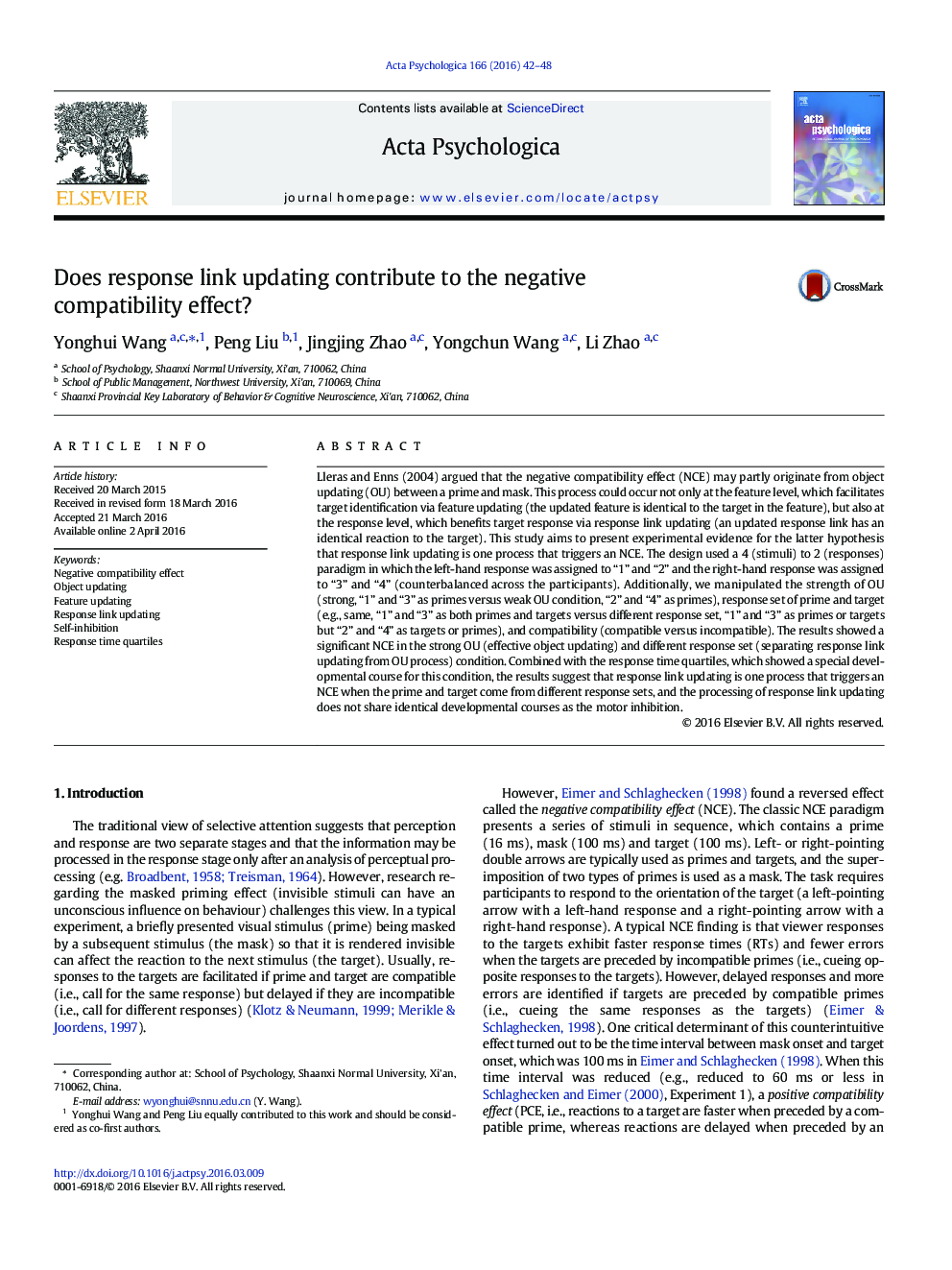| Article ID | Journal | Published Year | Pages | File Type |
|---|---|---|---|---|
| 7277101 | Acta Psychologica | 2016 | 7 Pages |
Abstract
Lleras and Enns (2004) argued that the negative compatibility effect (NCE) may partly originate from object updating (OU) between a prime and mask. This process could occur not only at the feature level, which facilitates target identification via feature updating (the updated feature is identical to the target in the feature), but also at the response level, which benefits target response via response link updating (an updated response link has an identical reaction to the target). This study aims to present experimental evidence for the latter hypothesis that response link updating is one process that triggers an NCE. The design used a 4 (stimuli) to 2 (responses) paradigm in which the left-hand response was assigned to “1” and “2” and the right-hand response was assigned to “3” and “4” (counterbalanced across the participants). Additionally, we manipulated the strength of OU (strong, “1” and “3” as primes versus weak OU condition, “2” and “4” as primes), response set of prime and target (e.g., same, “1” and “3” as both primes and targets versus different response set, “1” and “3” as primes or targets but “2” and “4” as targets or primes), and compatibility (compatible versus incompatible). The results showed a significant NCE in the strong OU (effective object updating) and different response set (separating response link updating from OU process) condition. Combined with the response time quartiles, which showed a special developmental course for this condition, the results suggest that response link updating is one process that triggers an NCE when the prime and target come from different response sets, and the processing of response link updating does not share identical developmental courses as the motor inhibition.
Related Topics
Life Sciences
Neuroscience
Cognitive Neuroscience
Authors
Yonghui Wang, Peng Liu, Jingjing Zhao, Yongchun Wang, Li Zhao,
